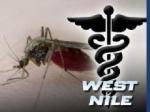Florida 11/02/11 staugustine.com: from article by Jennifer Edwards – A 9-year-old was attacked by a raccoon and bitten eight times on the campus of Florida’s School for the Deaf and the Blind. The raccoon was not caught but the girl was vaccinated for rabies as a precaution. See http://staugustine.com/news/local-news/2011-11-02/girl-stable-after-raccoon-attack
 Georgia 11/03/11 Hartwell, Hart County: Several Hartwell Elementary School students are being treated after touching a dead bat on the school grounds. The bat was tested for rabies, but as it had deteriorated significantly the results were considered inconclusive. See http://www.thehartwellsun.com/articles/2011/11/02/news/news02.txt
Georgia 11/03/11 Hartwell, Hart County: Several Hartwell Elementary School students are being treated after touching a dead bat on the school grounds. The bat was tested for rabies, but as it had deteriorated significantly the results were considered inconclusive. See http://www.thehartwellsun.com/articles/2011/11/02/news/news02.txt
 New Jersey 11/02/11 Absecon, Atlantic County: A raccoon removed from a local residence tested positive for rabies. This is the 12th case of rabies in the county this year; eight of them raccoons. See http://galloway.patch.com/articles/raccoon-found-in-absecon-tests-positive-for-rabies
New Jersey 11/02/11 Absecon, Atlantic County: A raccoon removed from a local residence tested positive for rabies. This is the 12th case of rabies in the county this year; eight of them raccoons. See http://galloway.patch.com/articles/raccoon-found-in-absecon-tests-positive-for-rabies
Texas 11/02/11 Wood County: A skunk that wandered into a family’s yard and fought with their three dogs has tested positive for rabies. See http://www.news-journal.com/woodcounty/news/rabid-animals-found- lurking-in-wood-county/article_65f719ab-2da1-5bb6-b9d9-d6ec7151a813.html
lurking-in-wood-county/article_65f719ab-2da1-5bb6-b9d9-d6ec7151a813.html
Virginia 11/02/11 Gate City, Scott County: A skunk killed by three dogs in the Yuma community has tested positive for rabies. See http://www.necn.com/11/02/11/Scott-Co-reports-1st-animal-rabies-case-/landing_health.html?&apID=2714a23fbbf34accb81507bc54ca9e14
 Indiana 11/02/11 Whiting, Lake County: Former Hammond police chief Frank DuPey, 78, has died from complications of West Nile Virus. See http://www.nwitimes.com/news/local/lake/hammond/ex-hammond-police-chief-army-veteran-frank-dupey-laid-to/article_a991af2a-6d71-5b03-9875-09837fb701fd.html
Indiana 11/02/11 Whiting, Lake County: Former Hammond police chief Frank DuPey, 78, has died from complications of West Nile Virus. See http://www.nwitimes.com/news/local/lake/hammond/ex-hammond-police-chief-army-veteran-frank-dupey-laid-to/article_a991af2a-6d71-5b03-9875-09837fb701fd.html
 Texas 111/02/11 Montgomery County: Health officials have confirmed a new case of human West Nile Virus. It is the third case in the county this year. Statewide, 26 cases have been reported by the Texas Department of State Health Services in 2011. See http://www.khou.com/news/local/New-case-of-human-West-Nile-Virus-reported-in-Montgomery-County-133112123.html
Texas 111/02/11 Montgomery County: Health officials have confirmed a new case of human West Nile Virus. It is the third case in the county this year. Statewide, 26 cases have been reported by the Texas Department of State Health Services in 2011. See http://www.khou.com/news/local/New-case-of-human-West-Nile-Virus-reported-in-Montgomery-County-133112123.html
 Wisconsin 11/03/11 Polk County Health Department: A dead crow found in the Amery area has tested positive for West Nile Virus. See http://www.weau.com/home/headlines/West_Nile_Virus_confirmed_in_Polk_County_133164303.html
Wisconsin 11/03/11 Polk County Health Department: A dead crow found in the Amery area has tested positive for West Nile Virus. See http://www.weau.com/home/headlines/West_Nile_Virus_confirmed_in_Polk_County_133164303.html
Books of Note:
California 10/25/11 stanford.edu: News Release –
In his new book, Nathan Wolfe, a professor of Biology at Stanford University, chronicles the changes in human behavior that have shaped our experience with pandemics and he ultimately provides a vision for predicting and preventing future outbreaks. Wolfe’s firsthand knowledge from over a decade of virus hunting is woven throughout the book. His early work in Cameroon, in west-central Africa, sent him to villages where the inhabitants relied on wild game, or bushmeat, for protein. When hunters contact animal fluids during butchering, it makes them especially vulnerable to hosting novel bugs. Many viruses, like HIV and influenza, jumped to humans from other animals.
 Hunters are important allies for studying emerging disease. By enlisting them to collect thousands of blood samples, Wolfe and his colleagues found unique forms of viruses, including retroviruses like HIV. Since then, Wolfe and his team have established the Cameroon monitoring system in countries throughout the world, including China, Southeast Asia and other parts of central Africa. While viruses may emerge from far-flung places, Wolfe emphasizes that modern transportation networks help microbes spread faster than ever. For that reason, Wolfe says The Viral Storm is written “for anyone who rides the subway, or takes an airplane, or kisses their children goodbye on their way off to school.” The global connectivity that helps viruses spread also makes them easier to track. Wolfe is also the founder and CEO of San Francisco-based Global Viral Forecasting Initiative, which works in 20 countries trying to find potential pandemics. A digital surveillance team monitors chatter on hundreds of websites, looking for the signal of a threatening outbreak in online noise. By combining technology with boots-on-the-ground natural science, GVFI aims to catch viruses before they become world travelers.
Hunters are important allies for studying emerging disease. By enlisting them to collect thousands of blood samples, Wolfe and his colleagues found unique forms of viruses, including retroviruses like HIV. Since then, Wolfe and his team have established the Cameroon monitoring system in countries throughout the world, including China, Southeast Asia and other parts of central Africa. While viruses may emerge from far-flung places, Wolfe emphasizes that modern transportation networks help microbes spread faster than ever. For that reason, Wolfe says The Viral Storm is written “for anyone who rides the subway, or takes an airplane, or kisses their children goodbye on their way off to school.” The global connectivity that helps viruses spread also makes them easier to track. Wolfe is also the founder and CEO of San Francisco-based Global Viral Forecasting Initiative, which works in 20 countries trying to find potential pandemics. A digital surveillance team monitors chatter on hundreds of websites, looking for the signal of a threatening outbreak in online noise. By combining technology with boots-on-the-ground natural science, GVFI aims to catch viruses before they become world travelers.
 “In the last chapter of the book I portray a fictional scenario for the future of how I hope that we’ll address some of these pandemics,” Wolfe said. “I think the exciting thing about GVFI is that we’re really working on a daily basis to move that towards a reality.” To predict and prevent the next pandemic, GVFI will rely equally on hunters in Africa and analysts crunching data in California. “Whether it’s epidemiology or virology or computer science, we bring all of those to bear to find the best solutions to addressing these problems,” Wolfe said. Wolfe wants to confine images of plague-racing vaccine developers to movies like Contagion. “Historically, the way we’ve focused on disease control when it comes to pandemics is very much a reactive, responsive approach,” he said. “I think now we’ve crossed the threshold into having a lot of organizations and governments that now recognize that prediction is important.” According to Wolfe, stopping deadly bugs before they spread also depends on how individuals think about pandemics. In The Viral Storm, he talks about “risk literacy,” referring to the ability to compare and interpret relative risks. “I think there is a real importance for people to understand the nature of these risks,” Wolfe said. “And while we may not perceive them in the way that we perceive more visually traumatic risks like hurricanes and earthquakes, they represent, in many ways, more profound threats.”
“In the last chapter of the book I portray a fictional scenario for the future of how I hope that we’ll address some of these pandemics,” Wolfe said. “I think the exciting thing about GVFI is that we’re really working on a daily basis to move that towards a reality.” To predict and prevent the next pandemic, GVFI will rely equally on hunters in Africa and analysts crunching data in California. “Whether it’s epidemiology or virology or computer science, we bring all of those to bear to find the best solutions to addressing these problems,” Wolfe said. Wolfe wants to confine images of plague-racing vaccine developers to movies like Contagion. “Historically, the way we’ve focused on disease control when it comes to pandemics is very much a reactive, responsive approach,” he said. “I think now we’ve crossed the threshold into having a lot of organizations and governments that now recognize that prediction is important.” According to Wolfe, stopping deadly bugs before they spread also depends on how individuals think about pandemics. In The Viral Storm, he talks about “risk literacy,” referring to the ability to compare and interpret relative risks. “I think there is a real importance for people to understand the nature of these risks,” Wolfe said. “And while we may not perceive them in the way that we perceive more visually traumatic risks like hurricanes and earthquakes, they represent, in many ways, more profound threats.”
CDC Reports:
 National 11/04/11 cdc.gov: Summary – Rabies has one of the highest case-fatality ratios of any infectious disease. This report provides recommendations for public health officials, veterinarians, animal control officials, and other parties engaged in rabies prevention and control activities and should serve as the basis for standardizing procedures among jurisdictions. The recommendations regarding domestic animal vaccination, management of animals exposed to rabies, and management of animals that bite humans are the core elements of animal rabies control and human rabies prevention. These updated 2011 guidelines include the national case definition for animal rabies and clarify the role of the CDC rabies laboratory in providing confirmatory
National 11/04/11 cdc.gov: Summary – Rabies has one of the highest case-fatality ratios of any infectious disease. This report provides recommendations for public health officials, veterinarians, animal control officials, and other parties engaged in rabies prevention and control activities and should serve as the basis for standardizing procedures among jurisdictions. The recommendations regarding domestic animal vaccination, management of animals exposed to rabies, and management of animals that bite humans are the core elements of animal rabies control and human rabies prevention. These updated 2011 guidelines include the national case definition for animal rabies and clarify the role of the CDC rabies laboratory in providing confirmatory  testing of suspect animals. The table of rabies vaccines licensed and marketed in the United States has been updated, and additional references have been included to provide scientific support for information in this report. – National Association of State Public Health Veterinarians, Inc. (NASPHV), Recommendations and Reports November 4, 2011 / 60(RR06); 1-14. – For complete report see http://www.cdc.gov/mmwr/preview/mmwrhtml/rr6006a1.htm?s_cid=rr6006a1_e&source=govdelivery
testing of suspect animals. The table of rabies vaccines licensed and marketed in the United States has been updated, and additional references have been included to provide scientific support for information in this report. – National Association of State Public Health Veterinarians, Inc. (NASPHV), Recommendations and Reports November 4, 2011 / 60(RR06); 1-14. – For complete report see http://www.cdc.gov/mmwr/preview/mmwrhtml/rr6006a1.htm?s_cid=rr6006a1_e&source=govdelivery










